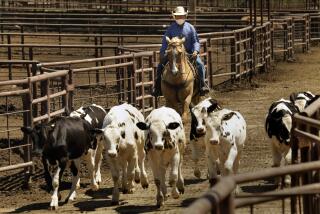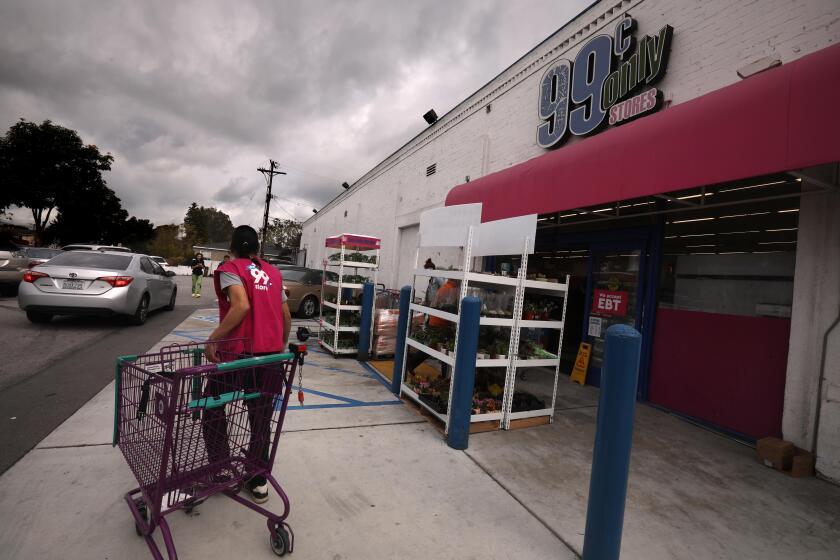Is eating locally a crock?
Today’s question: Are people who eat locally grown, naturally produced food better off for it? Paul Roberts and Jacob Grier debate the new food economy. Previously, they discussed the global food shortage, food safety panics and the role of the FDA. Tomorrow: foods that need to be banned.
Eat ‘em raw!
Point: Jacob Grier
A couple of months ago, my research into food regulation took me into the underground world of “raw,” or unpasteurized, milk. Because federal regulations ban the sale of raw milk across state lines, and many states make it difficult to purchase legally, getting one’s hands on raw milk often requires dedication and a connection to local dairies. It’s no surprise then that the people who drink it contend that it conveys enormous benefits. At a raw milk rally recently held in Washington, D.C., I watched author Richard Morris speak to the crowd about how drinking raw milk helped him lose more than 100 pounds and regain his health. The website of the Campaign for Real Milk, a project of the Weston A. Price Foundation, includes numerous testimonials from people avowing the benefits of unpasteurized dairy.
Some of the claims, such as those that say unpasteurized milk helps their digestion, are plausible. Others, such as a mother’s claim that raw milk took her son off the autistic spectrum, are clearly farfetched.
While few natural products elicit the devotion among their consumers that raw milk does, many advocates for organic, locally produced foods believe that these products provide greater health benefits than their conventionally raised counterparts. The difficulty is in separating anecdotal evidence from rigorous analysis. While some studies suggest that naturally grown foods may offer more nutrients or antioxidants, I’m not yet convinced that they are substantially healthier than ordinary produce.
But this doesn’t mean that people who eat organic, locally grown foods aren’t better off. They may be healthier simply because people who eat organic foods are more conscious of what they eat in general. Or if the produce they buy is fresher for being locally grown, they may be inclined to consume more of it than people buying fruit out of season.
(This has been my personal experience. I can’t remember the last time I bought an apple at a grocery store, but when local apples show up at the farmers’ market, I gobble them like candy.)
Locally grown food may be more satisfying in other ways too. It might connect the buyer to a community, put him in touch with seasonality, introduce him to less common cultivars, make him feel better about his environmental impact (though local isn’t always better) or simply taste superior. While there are certainly benefits to being able to get fresh, conventional produce from all over the world any time we want it, consumers should be open to experiencing local delights.
In short, regardless of what we discover about the relative health merits of natural, locally grown foods, there are plenty of reasons to enjoy them. Eat up!
Jacob Grier is a bartender and think tank PR manager. He writes about food and regulation at www.jacobgrier.com.
Local is not always better
Point: Paul Roberts
On this one, Jacob, you may be standing to my left. While there are many benefits to eating locally -- including those you mention -- the costs and benefits of local production (versus national or, gasp, global) need far more study before we can understand how and where to deploy localism in solving food crises. And unfortunately, just as proponents of organic foods sometimes offer it as the do-it-all solution, “localavores” can occasionally go too far -- despite the fact that, in some cases, local may not be the best answer.
Consider the energy and climate impacts of local food production. Yes, shipping food tens of thousands of miles, as is often done today, burns lots of oil and spews lots of carbon. But simply cutting “food miles” isn’t an automatic gain for sustainability. I’d burn far less fuel (and thus emit far less carbon) shipping a freight car load of produce from the Salinas Valley to Seattle than I would using dozens and dozens of individual pickup trucks to haul the same quantity of produce from local farms around Seattle to the farmer’s market downtown. The paradox of our centralized, industrialized food system, with its carefully scheduled deliveries and obsessive focus on cost-cutting, is that it actually helps keep food transportation energy costs down.
Nor is distance the only factor. A few years ago, when local-food advocates in Britain complained about importing meat from New Zealand, researchers found that New Zealand farmers use far less synthetic fertilizer than British farmers do and that New Zealand sheep feed almost entirely on grass, whereas livestock in Britain is grain-fed. As a result, importing New Zealand mutton and dairy products actually cut energy use and climate impacts by 75% and 50%, respectively, over locally produced items.
And then, of course, there’s the question of how many people can be fed locally. Countries like the United States, blessed with superb soils and climate, can indeed feed themselves “locally.” But countries like China and India, whose soaring populations have already exceeded their food output, will need imports for the foreseeable future -- in the coming decades, we will probably need more global trade, not less. The challenge will be to find ways to do it sustainably and equitably.
And even here, in the breadbasket of the world, the physical infrastructure needed to distribute local food -- the old farm-to-market roads and rail spurs that once connected farms to cities -- has long since been abandoned or removed to make way for national and global supply chains. By one estimate, the average American community produces just 5% of the food its citizens consume.
Am I arguing against local food? Hell, no. As you rightly point out, local foods often taste better and are more nutritious. They support smaller producers who are struggling in a market that favors large national and multinational players.
Perhaps most important, local foods connect, or reconnect, consumers to producers in often intangible ways that, in my view, are ultimately critical to our long-term survival. Where are urban children of today supposed to gain the exposure to food production that might inspire them to become farmers themselves?
What I am arguing, however, is that if we want to re-establish this vital connection, we need to understand how much work lies ahead of us -- and how a weekly trip to local farmer’s market, invigorating though it may be, is just the first step.
Paul Roberts writes about the economics and politics of food, energy and other key “inputs.” His most recent book, “The End of Food,” has just been published by Houghton Mifflin.
| | | Day 4 |
More to Read
A cure for the common opinion
Get thought-provoking perspectives with our weekly newsletter.
You may occasionally receive promotional content from the Los Angeles Times.






